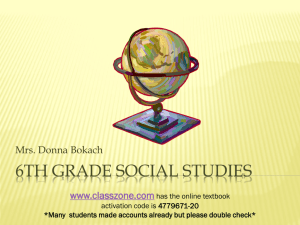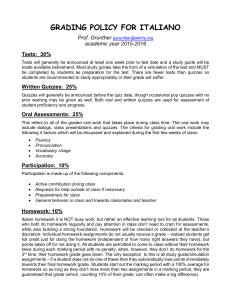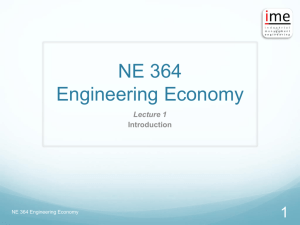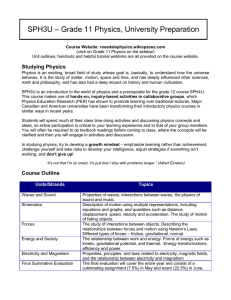Document 10304472
advertisement
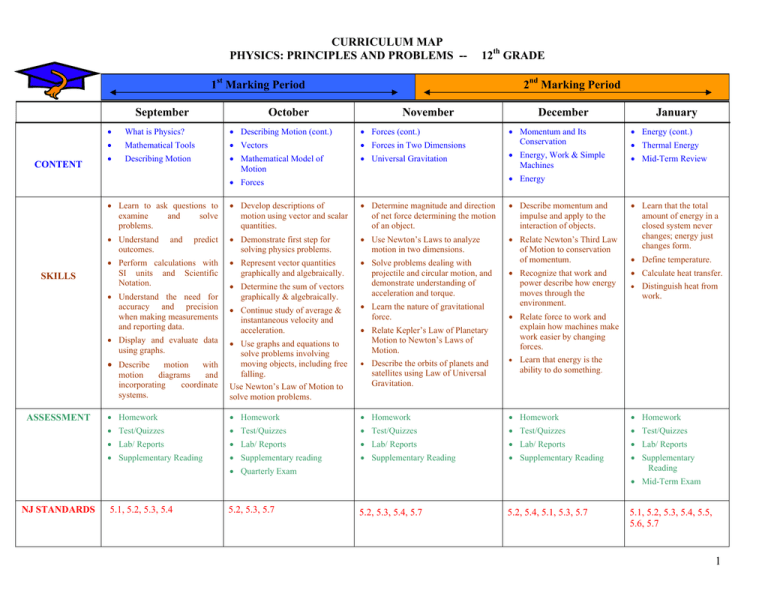
CURRICULUM MAP PHYSICS: PRINCIPLES AND PROBLEMS -- 12th GRADE 1st Marking Period September CONTENT October 2nd Marking Period November • What is Physics? • Describing Motion (cont.) • Forces (cont.) • Mathematical Tools • Vectors • Forces in Two Dimensions • Describing Motion • Mathematical Model of Motion • Universal Gravitation • Energy (cont.) • Energy, Work & Simple Machines • Mid-Term Review • Develop descriptions of motion using vector and scalar quantities. • Determine magnitude and direction of net force determining the motion of an object. • Describe momentum and impulse and apply to the interaction of objects. • Understand outcomes. • Demonstrate first step for solving physics problems. • Use Newton’s Laws to analyze motion in two dimensions. • Represent vector quantities graphically and algebraically. • Solve problems dealing with projectile and circular motion, and demonstrate understanding of acceleration and torque. • Relate Newton’s Third Law of Motion to conservation of momentum. predict • Perform calculations with SI units and Scientific Notation. • Understand the need for accuracy and precision when making measurements and reporting data. • Display and evaluate data using graphs. • Describe motion with motion diagrams and incorporating coordinate systems. ASSESSMENT • Momentum and Its Conservation • Learn to ask questions to examine and solve problems. and • Determine the sum of vectors graphically & algebraically. • Continue study of average & instantaneous velocity and acceleration. • Use graphs and equations to solve problems involving moving objects, including free falling. Use Newton’s Law of Motion to solve motion problems. • Learn the nature of gravitational force. • Relate Kepler’s Law of Planetary Motion to Newton’s Laws of Motion. • Describe the orbits of planets and satellites using Law of Universal Gravitation. • Recognize that work and power describe how energy moves through the environment. • Thermal Energy • Learn that the total amount of energy in a closed system never changes; energy just changes form. • Define temperature. • Calculate heat transfer. • Distinguish heat from work. • Relate force to work and explain how machines make work easier by changing forces. • Learn that energy is the ability to do something. • Homework • Homework • Homework • Homework • Homework • Test/Quizzes • Test/Quizzes • Test/Quizzes • Test/Quizzes • Test/Quizzes • Lab/ Reports • Lab/ Reports • Lab/ Reports • Lab/ Reports • Lab/ Reports • Supplementary Reading • Supplementary reading • Supplementary Reading • Supplementary Reading • Supplementary Reading • Quarterly Exam NJ STANDARDS January • Energy • Forces SKILLS December 5.1, 5.2, 5.3, 5.4 5.2, 5.3, 5.7 • Mid-Term Exam 5.2, 5.3, 5.4, 5.7 5.2, 5.4, 5.1, 5.3, 5.7 5.1, 5.2, 5.3, 5.4, 5.5, 5.6, 5.7 1 CURRICULUM MAP PHYSICS: PRINCIPLES AND PROBLEMS -- 12th GRADE 3rd Marking Period CONTENT February March • Waves and Energy Transfer • Reflection & Refraction (cont) • Static Electricity (cont.) • Series and Parallel Circuits • Sound • Mirrors and Lenses • Electric Fields • Magnetic Fields • Light • Diffraction and Interference of Light. • Current Electricity • Electromagnetic Induction • Reflection and Refraction • Determine how transfer energy. waves • Describe wave reflection and discuss its practical significance. SKILLS 4th Marking Period • Describe sound in terms of wave phenomena. • Discover the principles behind what makes a sound. • Understand the fundamentals of light, including its speed, wavelength range and intensity. April • • Static Electricity • Discover what effects are caused by changes in the index of refraction. • Locate real and virtual images produce by plane, concave, and convex mirrors. • Recognize causes of aberrations in lenses and mirrors and how these can be minimized. • Define diffraction and relate it to the interference of light waves. • Infer the rules of how charge pushes and pulls on the world. • Distinguish between electric force and electric fields. • Understand how grounding is related to charge sharing. • Recognized the relationship between conductor shape and electric field strength. • Explain energy transfer in circuits. • Solve problems involving current, potential difference and resistance. “District Science Fair” • Distinguish between parallel and series circuits and series-parallel combinations and solve problems dealing with them. • Explain the function of fuses circuit breakers, and ground fault interrupters, and describe ammeters and voltmeters. • Relate magnetism to electric charge and electricity. June • Electromagnetic Induction (cont.) • Electromagnetism • Final Exam Review • Apply this phenomenon to the construction of generators and transformers. • Learn how combined electric and magnetic fields can be used to find the masses of electrons, atoms, and molecules. • Explain how electromagnetic waves are created, travel through empty space and are detected. • Describe the operation of a grating spectrometer. • Classify electrical charge and analyze how charge interacts with matter. • Diagram simple electric circuits. • Solve problems involving the use and cost of electric energy. • Homework • Homework • Homework • Homework • Homework • Test/Quizzes • Test/Quizzes • Test/Quizzes • Test/Quizzes • Test/Quizzes • Lab/ Reports • Lab/ Reports • Lab/ Reports • Lab/ Reports • Lab/ Reports • Supplementary Reading • Supplementary Reading • Supplementary reading • Supplementary Reading • Supplementary Reading • Quarterly Exam • Science Fair Project • Research Paper • Describe the interactions between two or more light waves and between light waves and matter. • Study how light is bent when it moves from one medium to another. • Understand why total internal reflection occurs. ASSESSMENT May • Describe how electromagnetism is harnessed to produce mechanical work. • Describe how changing magnetic fields can generate electric current and potential difference. • NJ STANDARDS 5.1, 5.2, 5.3, 5.7 5.1, 5.2, 5.3, 5.7 5.1, 5.2, 5.7 5.1, 5.2, 5.4, 5.6, 5.7 Final Exam 5.1, 5.2, 5.7, 5.8 2 CURRICULUM MAP PHYSICS: PRINCIPLES AND PROBLEMS -- 12th GRADE 3
